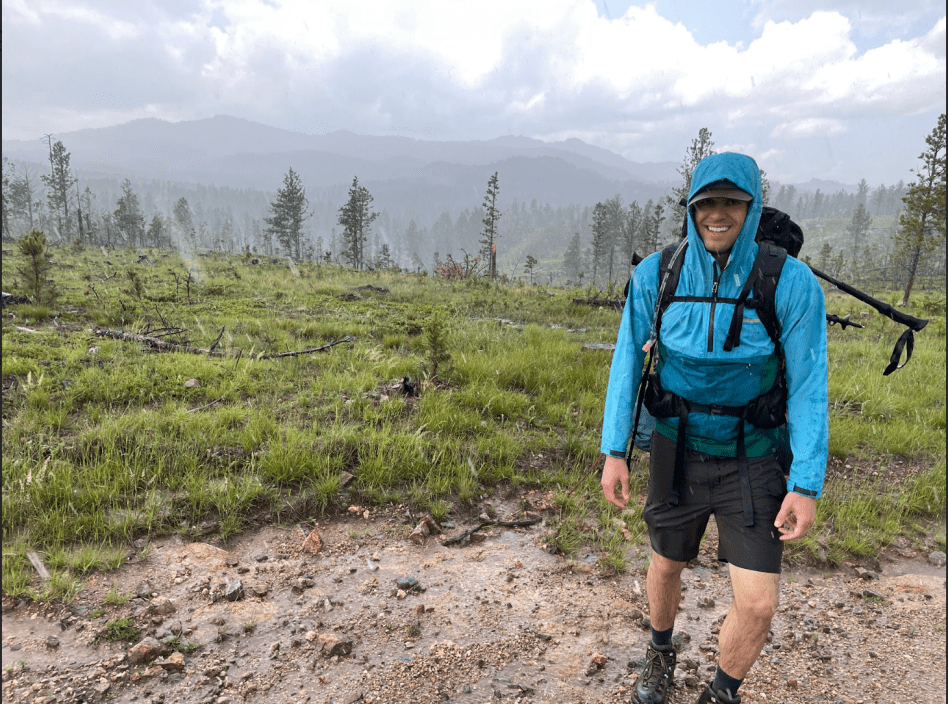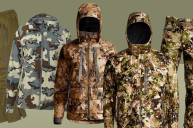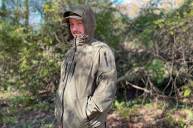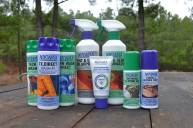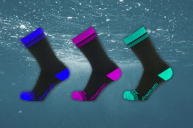Anytime you're setting out on a hiking or backpacking trip, it's best to adopt the mindset of, "Hope for the best, prepare for the worst." When I checked the forecast for an upcoming four-day backpacking trip in the Black Elk Wilderness of South Dakota, I wasn't expecting to see rain predicted for every one of the days—but I made sure to prepare for it.
Rain doesn't have to ruin a trip in the great outdoors, though. In fact, by packing prudently for wet weather, you'll even find yourself enjoying it instead of shaking your fist at the sky. While getting a little damp is inevitable, the biggest priorities when storms are looming are to ensure your overall safety and to prevent injury.
That means having a shelter that keeps you protected; comfortable apparel that repels water or dries quickly; and gear that keeps you nimble and upright while on the move, such as grippy footwear and trekking poles. Walking around in soaking-wet clothes that chafe in all the wrong places and never fully dry? That's no fun at all. Waking up in the middle of the night to find that your tent has an inch of water in it? Downright demoralizing. Slipping on the trail and landing butt-first in a mud puddle? Kind of funny-but still, not ideal.
I've been a gear tester and all-weather hiker for years, so take it from me: The following gear will ensure you can make the best of your rainy situation without letting it dampen your enthusiasm, just as it did for us on our most recent backpacking trip.
1. A Water-Repellent Rain Jacket
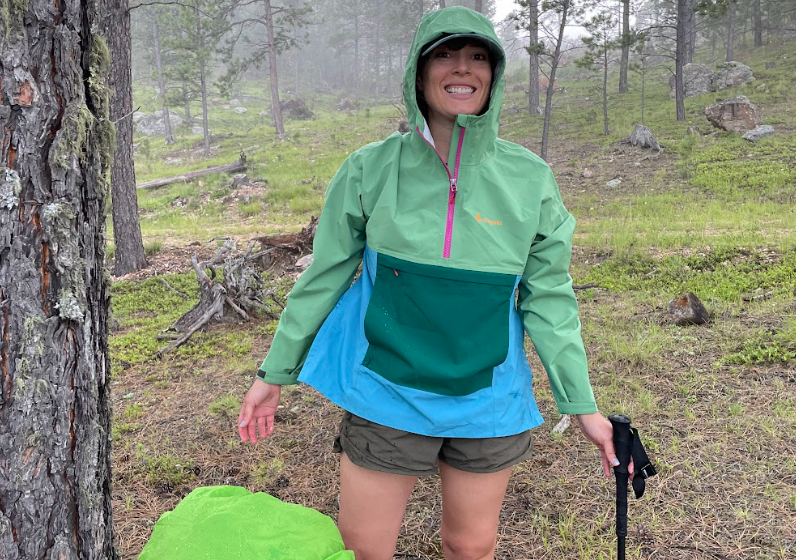
Paige Triola for Wide Open Spaces
A well-constructed rain jacket will keep you from getting soaked, chilly, and sad on outdoor adventures. Key things to look for include decent ventilation, a comfortable and flexible fit, quick-drying fabric-and of course, a high level of water resistance.
The waterproof rating of rain gear is expressed in millimeters, so a product description for a rain jacket will often include a number such as 10,000mm, 20,000mm, and so on. A jacket with a rating of 10,000mm indicates that a column of water measuring 10,000mm tall could sit on the fabric before the waterproof coating becomes permeated. Thus, the higher the rating, the more resistant the jacket is to heavy rainfall.
We donned the colorful Cotopaxi Cielo Rain Anorak when dark clouds gathered overhead, and the jackets served us well. Roomy and easy to move in, they shed water and looked beautiful doing it. We were cheerful splashes of bright colors hiking along under gray skies and sheets of rain. The large kangaroo pocket in front is a thoughtful addition that offers an easy-to-access dry place to stash a phone and sunglasses.
Granted, these anoraks have a rating of 10,000mm and are best suited to light-to-moderate precipitation, so they started to get soggy in heavier downpours. Another highly rated option to consider for stormy weather is the Houdini BFF Jacket for its soft, lightweight feel and waterproof rating of 20,000mm.
2. Water-Resistant Bottoms
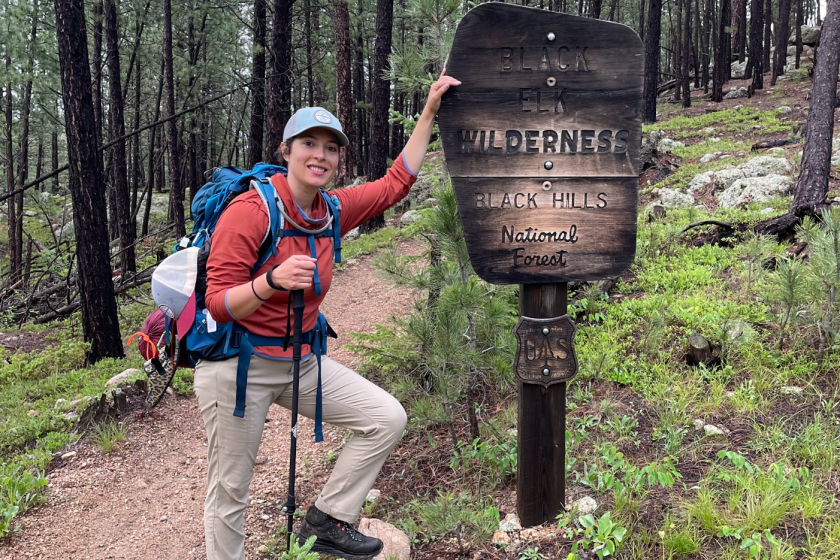
Paige Triola for Wide Open Spaces
Even if you're wearing a jacket that repels rain like nobody's business, it won't do your legs much good. This is especially true when you're wearing shorts, which offer no protection whatsoever. (I wore shorts on the rainiest day of the trip, and I do not recommend it.)
Therefore, you'll want to bring water-resistant hiking pants, or a pair of waterproof outer-layer pants that are lightweight and can be easily worn over regular hiking pants. Just make sure that waterproof outer layer has some breathability, or your legs will be wet with sweat instead of rain! And, as with the rain jackets, check the waterproof rating.
We both brought along our favorite Prana pants on this trip, which offer both water repellency and UPF sun protection. I wore the Prana Halle Straight Pant II, while my husband wore his Prana Brion Pant II. Not only are they wonderfully stretchy, well fitting, and durable, they breathe in the heat and wick away moisture on rainy days. Plus, they're made of performance fabric that's 95% recycled nylon and 5% elastane, so they're an eco-friendlier choice.
Like our Cotopaxi rain anoraks, these pants are fast-drying but do best in light-to-moderate showers; for more heavy-duty waterproof pants, opt for the Stormline Stretch Full Zip Rain Pants by Black Diamond. This zip-up outer layer, with a 10,000mm waterproof rating, does a better job of blocking water and wind in harsh conditions while remaining flexible, breathable, and quiet (no swishing!).
3. Grippy Trekking Poles
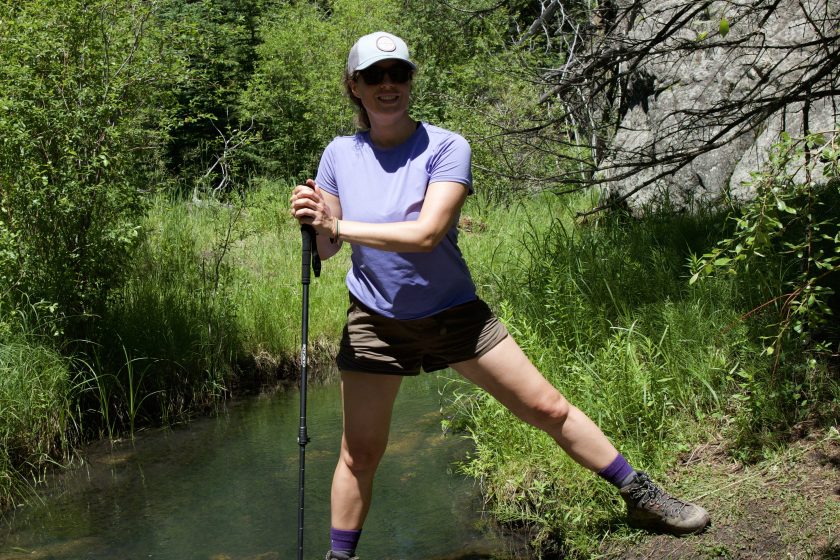
Paige Triola for Wide Open Spaces
Trekking poles are great to have for hiking in any kind of weather, but they can be lifesavers when rainstorms appear and surfaces become slick. A good pair will keep you upright, balanced, and moving swiftly on the trail even when it's slippery with rain or riddled with giant puddles.
For longer hikes and backpacking trips, look for lightweight poles—carbon is the best material for weight savings—that preferably collapse or fold to a smaller, easy-to-carry size. You'll also want poles that have carbide or steel tips to provide good traction. As for the benefits of bringing this piece of gear? I can name those directly from experience.
Between the two of us, my husband and I shared a pair of trekking poles from Cascade Mountain Tech: the Ultralight Carbon Fiber Quick Lock 2-Section Trekking Poles, to be specific. We preferred carrying just one pole each to keep the other hand free, but the benefit of using two poles is that it gives both legs relief when you're ascending or descending steep hills; it just depends on your preference.
For us, these poles did everything right. To start, the grippy handle never got slippery from rain or sweat, and the adjustable strap kept the pole firmly in my grasp at all times. At the other end of the pole, the tungsten carbide tip bit into any surface, so we didn't slip when traversing mud, sand, or wet granite boulders. They helped us stay balanced when crossing streams and vaulting over puddles.
My trust issues flared up when I first adjusted the pole's height with the middle clasp mechanism, but it locked into place and didn't budge even when I leaned my full weight on it. Lastly, I used my trekking pole as a crutch when my knee started acting up on the final day of our trip, and it would have taken us a lot longer to hike out of the woods without it.
4. Waterproof Hiking Boots with No-Slip Tread
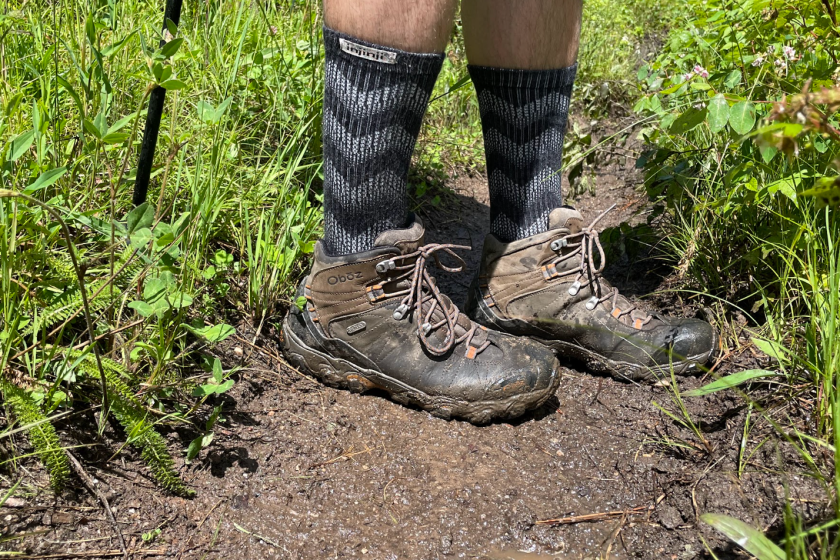
Paige Triola for Wide Open Spaces
Squelching around in wet shoes all day is fun for no one, and stepping on wet rocks and roots is an injury waiting to happen if the soles of your boots are too smooth. So when choosing hiking boots, check that the fabric on the upper is waterproof and the treads on the outsole have grippy, multidirectional lugs that won't slip and slide on rain-soaked surfaces. And, of course, your shoes need to be comfortable if you're going to be walking miles of varied terrain in them. If they're fully waterproof and treaded but stiff as a board and not even a little bit breathable, don't bother. The ideal waterproof hiking boot will keep water out during downpours and creek crossings without making your feet feel as if they're trapped in an Easy-Bake Oven.
We hiked a total of 23 miles on this trip, and my pair of Jack Wolfskin Terraquest Texapore Mid Boots performed admirably, despite being absolutely caked with mud at the end. It was liberating to walk through shallow streams and puddles knowing that the boots would keep out moisture. When hoofing it up hills and picking my way over wet rocks, I felt confident that the sticky Vibram soles would prevent any slips and falls.
My husband wore the Oboz Men's Bridger Mid Waterproof Boots, and he was also thrilled with how they lived up to their waterproof claims. The only time our boots got soaked was when heavy rain streamed in through the collar during a downpour, but they dried out over the course of the day and were ready for action by the following morning.
5. Non-Chafing Socks
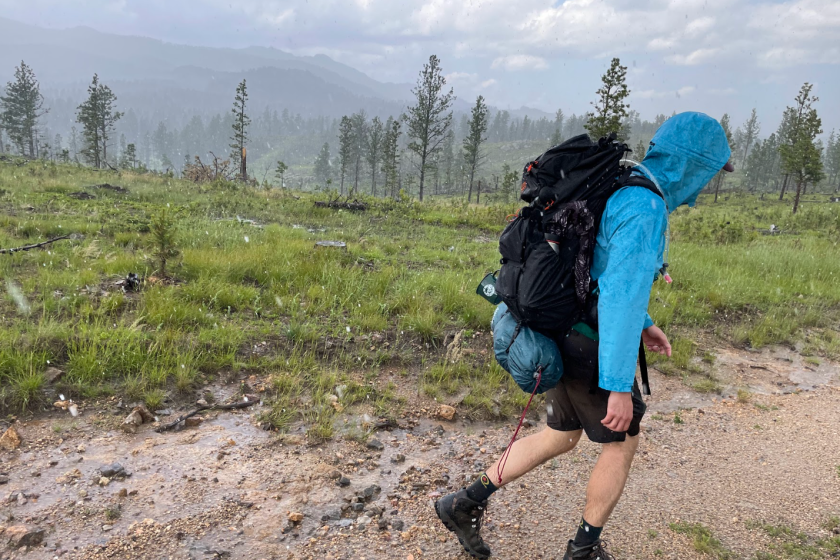
Paige Triola for Wide Open Spaces
Regardless of how waterproof your boots are, there's a good chance your socks will still get wet, especially when rain or stream water seeps in above the collar. But when you're wearing socks that dry quickly and don't smell like a wet dog afterward, it's only a minor inconvenience. As far as fabric goes, Merino wool can't be beat for its antimicrobial and anti-odor properties. (Another perk: It dries quickly.) For construction, look for socks that hug the shape of your foot without budging and feature a seamless toe for blister-free trekking.
On the first and rainiest day of our hike, we both wore Farm to Feet Damascus socks. As the drops started falling, gently at first, we were pleased that both our boots and socks remained dry. But as the rain increased in intensity and started seeping through the collar of the boots, it wasn't long before the socks were soaked. Still, thanks to the excellent fit and strategically placed padding of the Damascus sock, our feet didn't slide around in the boots, so neither of us suffered hot spots and blisters. When we made camp and hung our socks on the low branches of obliging pines, they were dry by that evening without a hint of foul odor.
Another standout we wore is the CEP Hiking Max Cushion Mid Cut Compression Socks, which also boast a great fit and fast-drying capabilities. Even with miles of trudging on hard and soft surfaces, the hug of compression around our feet kept any swelling at bay.
6. Weatherproof Tent
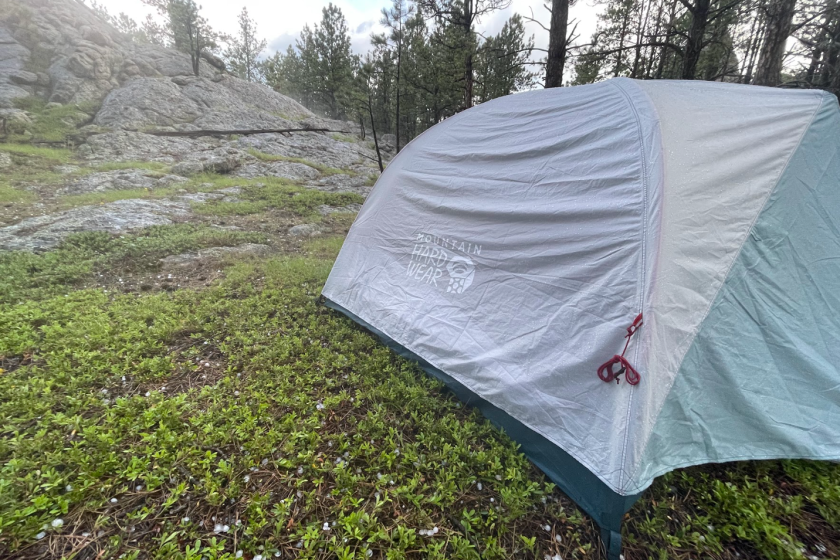
Paige Triola for Wide Open Spaces
After hours of hiking in wet weather, the main thing you need (besides a good meal) is shelter that will keep you dry. When choosing a waterproof tent, a few things should be non-negotiable: The fabric is water-repellent and waterproof; it's seam-sealed; it comes with a footprint and a rain fly; it features fast setup for when bad weather approaches; and, lastly, it's well-reviewed for its waterproof claims. The experience of others can be the best teacher!
During our trip, it frequently rained overnight as well as during the day, but we slept peacefully without a drop landing on us thanks to the Mountain Hardwear Mineral King 3. This tent checked all of the boxes. The interior stayed completely dry and was unaffected by high winds and large hail. It took very little time and skill to set up this tent, which was fully appreciated when rain clouds appeared suddenly and camp had to be made in record time. Lastly, the top portion of the tent is entirely made of mesh, so it doesn't get stuffy with the rain fly stretched overtop. And when the rain finally tapers off, you can remove the rainfly and stargaze as you fall asleep.
READ MORE: Women's Solo Hiking Guide: How to Stay Safe When Alone on Trail
